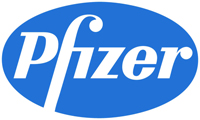 Last week, in Sanofi-Aventis v. Pfizer Inc., the Federal Circuit affirmed an award of priority to Pfizer by the Board of Patent Appeals and Interferences in an interference involving the cDNA for the human interleukin-13 receptor binding chain (IL-13bc). In particular, the appeal concerned the Board's decision with respect to the following count:
Last week, in Sanofi-Aventis v. Pfizer Inc., the Federal Circuit affirmed an award of priority to Pfizer by the Board of Patent Appeals and Interferences in an interference involving the cDNA for the human interleukin-13 receptor binding chain (IL-13bc). In particular, the appeal concerned the Board's decision with respect to the following count:
Count 3. The isolated protein of 6,268,480 claim 4;
OR
The isolated polynucleotide of 5,710,023 claim 1, selection (b) (an isolated polynucleotide comprising a nucleotide sequence of SEQ ID NO:3 from nucleotide 103 to nucleotide 1242).
 As the Federal Circuit noted, the parties disagreed as to the dispositive question in the interference, with Pfizer arguing that the question was "who first had in hand the actual isolated DNA of the count and appreciated its IL-13bc function," and Sanofi arguing that the question was "the date each party first knew the complete sequence" of nucleotides 103 to 1242 (i.e., the protein encoding portion of IL-13bc). In the interference, Sanofi was awarded the benefit of its December 6, 1995 priority date, and Pfizer presented evidence that by October 16, 1995, it had isolated a clone for human IL-13bc from a human cDNA library. While the sequencing of that human IL-13bc clone was completed by November 15, 1995, eight possible errors were subsequently identified in the 1143-nucleotide sequence, yielding an amino acid sequence that was correct at 379 of 380 residues. Although the Board concluded that Pfizer did not have a corrected sequence until February 7, 1996, it nevertheless determined that Pfizer had established conception of the subject matter of the count when it selected, isolated, and obtained the desired IL-13bc full-length polynucleotide and verified that it was the desired product, regardless of whether the fully correct sequencing of the polynucleotide was complete.
As the Federal Circuit noted, the parties disagreed as to the dispositive question in the interference, with Pfizer arguing that the question was "who first had in hand the actual isolated DNA of the count and appreciated its IL-13bc function," and Sanofi arguing that the question was "the date each party first knew the complete sequence" of nucleotides 103 to 1242 (i.e., the protein encoding portion of IL-13bc). In the interference, Sanofi was awarded the benefit of its December 6, 1995 priority date, and Pfizer presented evidence that by October 16, 1995, it had isolated a clone for human IL-13bc from a human cDNA library. While the sequencing of that human IL-13bc clone was completed by November 15, 1995, eight possible errors were subsequently identified in the 1143-nucleotide sequence, yielding an amino acid sequence that was correct at 379 of 380 residues. Although the Board concluded that Pfizer did not have a corrected sequence until February 7, 1996, it nevertheless determined that Pfizer had established conception of the subject matter of the count when it selected, isolated, and obtained the desired IL-13bc full-length polynucleotide and verified that it was the desired product, regardless of whether the fully correct sequencing of the polynucleotide was complete.
On appeal, Sanofi argued that by awarding priority to Pfizer, the Board had erred as a matter of law. In particular, Sanofi argued that Pfizer cannot be credited with conception before December 6, 1995 (Sanofi's date) because Pfizer's sequence analysis was in error as to eight nucleotides. In other words, Sanofi contended that until Pfizer had correctly analyzed the polynucleotide, neither conception nor reduction to practice could occur, because Federal Circuit precedent requires the full and correct nucleotide sequence to establish conception and reduction to practice. In support of its argument, Sanofi pointed to Amgen Inc. v Chugai Pharmaceutical Co., 927 F.2d 1200 (Fed. Cir. 1991), Fiers v. Revel, 984 F.2d 1164 (Fed. Cir. 1993), and Burroughs Wellcome Co. v. Barr Laboratories, Inc., 40 F.3d 1223 (Fed. Cir. 1994).
In affirming the Board's award of priority to Pfizer, the Federal Circuit indicated that Amgen did not support Sanofi's argument that Pfizer did not, as a matter of law, have a complete conception until Pfizer had the full correct nucleotide sequence. Instead, "[t]he court in Amgen held that when 'an inventor is unable to envision the detailed constitution of a gene' there may nonetheless be conception and reduction to practice of the gene when the inventor is in possession of the gene and a method for its preparation, i.e. 'after the gene has been isolated,' accompanied by knowledge of 'other characteristics sufficient to distinguish it from other genes.'" In this case, "[t]he Pfizer activity meets these criteria." With respect to Fiers, which Sanofi argued established a per se rule that conception of an isolated DNA requires the full and correct nucleotide sequence, the Federal Circuit noted that "[t]he Board distinguished Fiers and Amgen as holding that conception and reduction to practice did not occur until the gene was isolated, for in those cases neither structure nor definitive properties had been established for the isolated gene," and indicated that "Amgen and Fiers did not hold, as Sanofi asserts, that conception requires the complete and correct sequencing of the isolated DNA; the court instead referred to 'whatever characteristics sufficiently distinguish it.'" With respect to Sanofi's citation of Burroughs Wellcome, the Court stated that this case "did not change these requirements, in holding that conception requires that the claimed DNA is possessed as a physical embodiment," adding that "[k]nowledge of the specific nucleotide sequence was not required in Burroughs Wellcome."
The Federal Circuit explained that its "[p]recedent illustrates a variety of circumstances in which this requirement was met although the complete nucleotide sequence was not known," citing Enzo Biochem, Inc. v. Gen-Probe Inc., 323 F.3d 956 (Fed. Cir. 2002) (upholding claims for DNA probes that were made available by deposit in a public depository although the nucleotide sequence had not been determined); University of New Mexico v. Knight, 321 F.3d 1111 (Fed. Cir. 2003) (explaining that "a chemical structure is simply a means of describing a compound; it is not the invention itself"); and In re Wallach, 378 F.3d 1330 (Fed. Cir. 2004) (finding that the inventors were in possession of a protein that was described by a partial amino acid sequence in addition to other characteristics sufficient to identify it). Stating that "[w]hen the subject matter is a DNA segment, conception requires possession and appreciation of the DNA segment that is claimed," the Federal Circuit concluded that "the Board correctly based conception and reduction to practice on the possession of the isolated DNA segment that was shown to have the desired properties." The Court therefore concluded that the Board had applied the correct law, and affirmed the Board's award of priority to Pfizer.
Sanofi-Aventis v. Pfizer Inc. (Fed. Cir. 2013)
Panel: Circuit Judges Newman and Lourie and District Judge Davis, sitting by designation
Opinion by Circuit Judge Newman